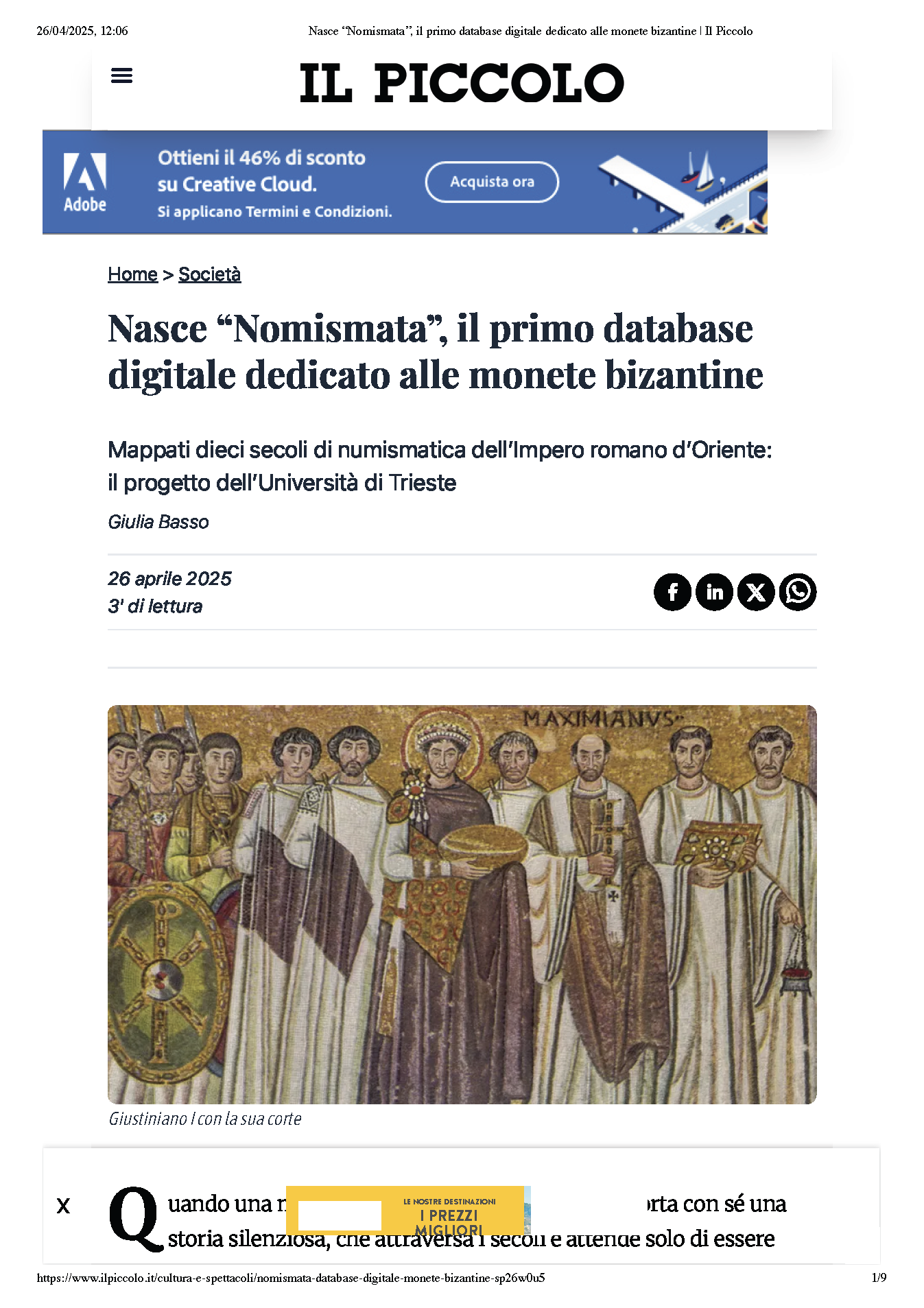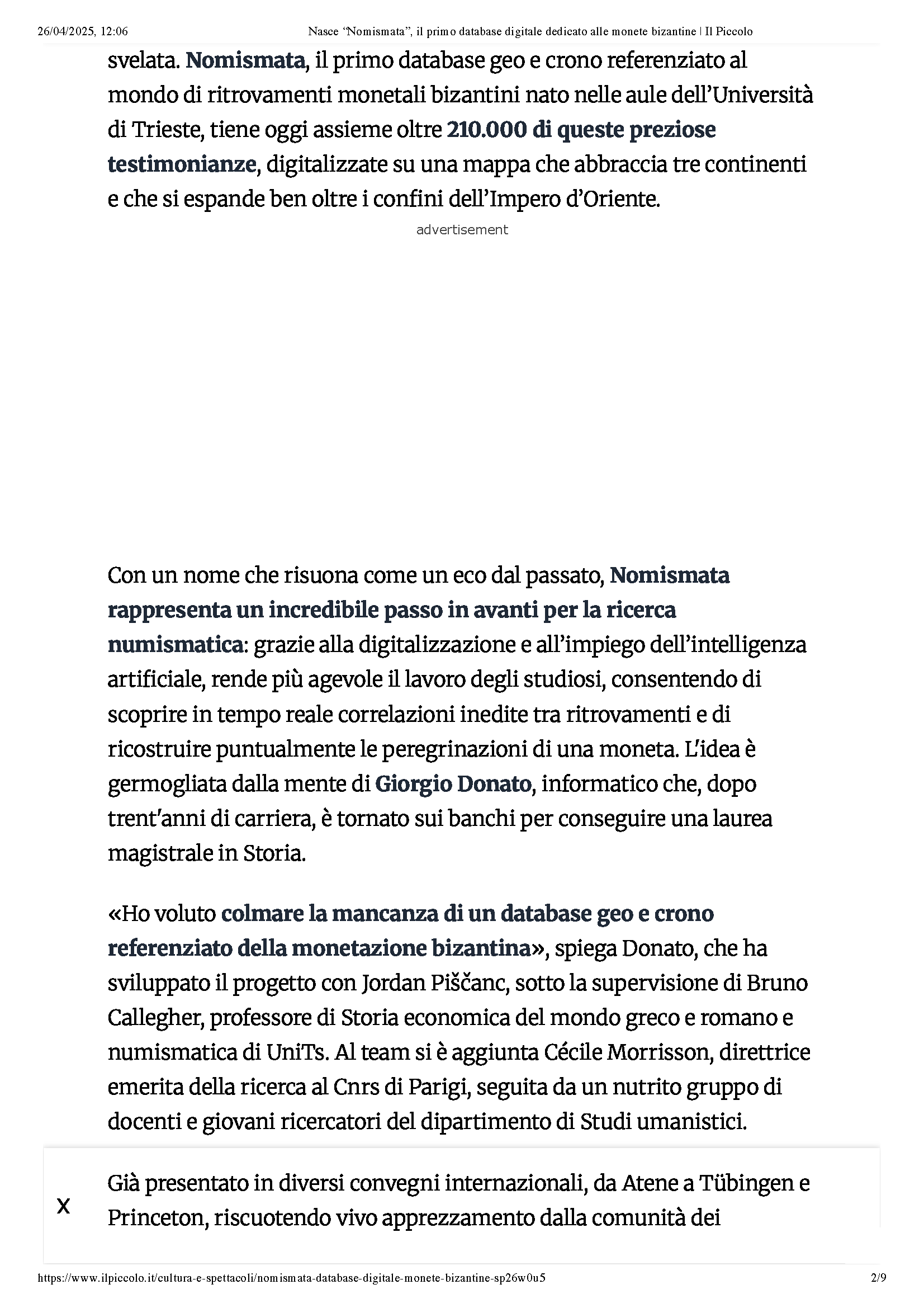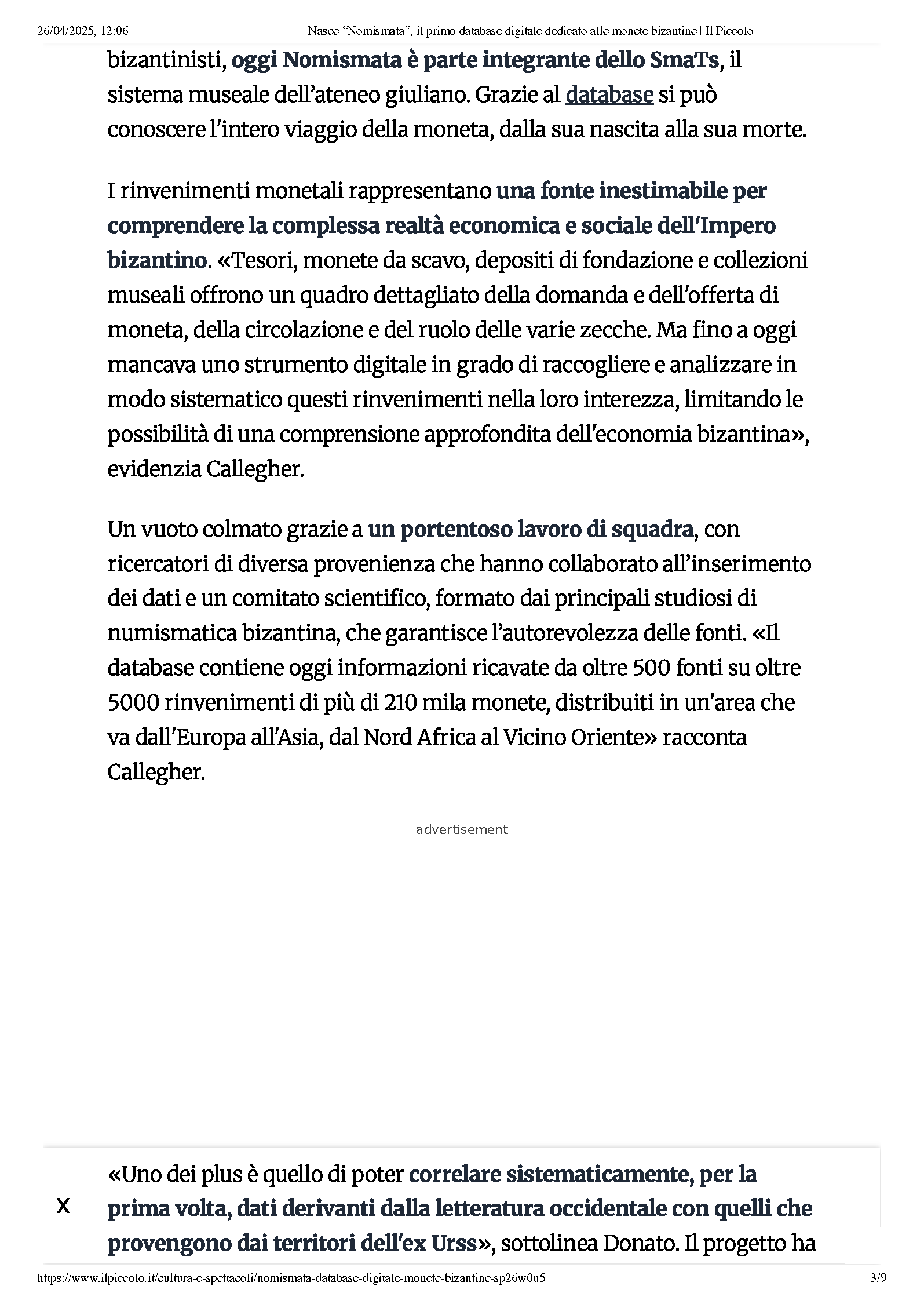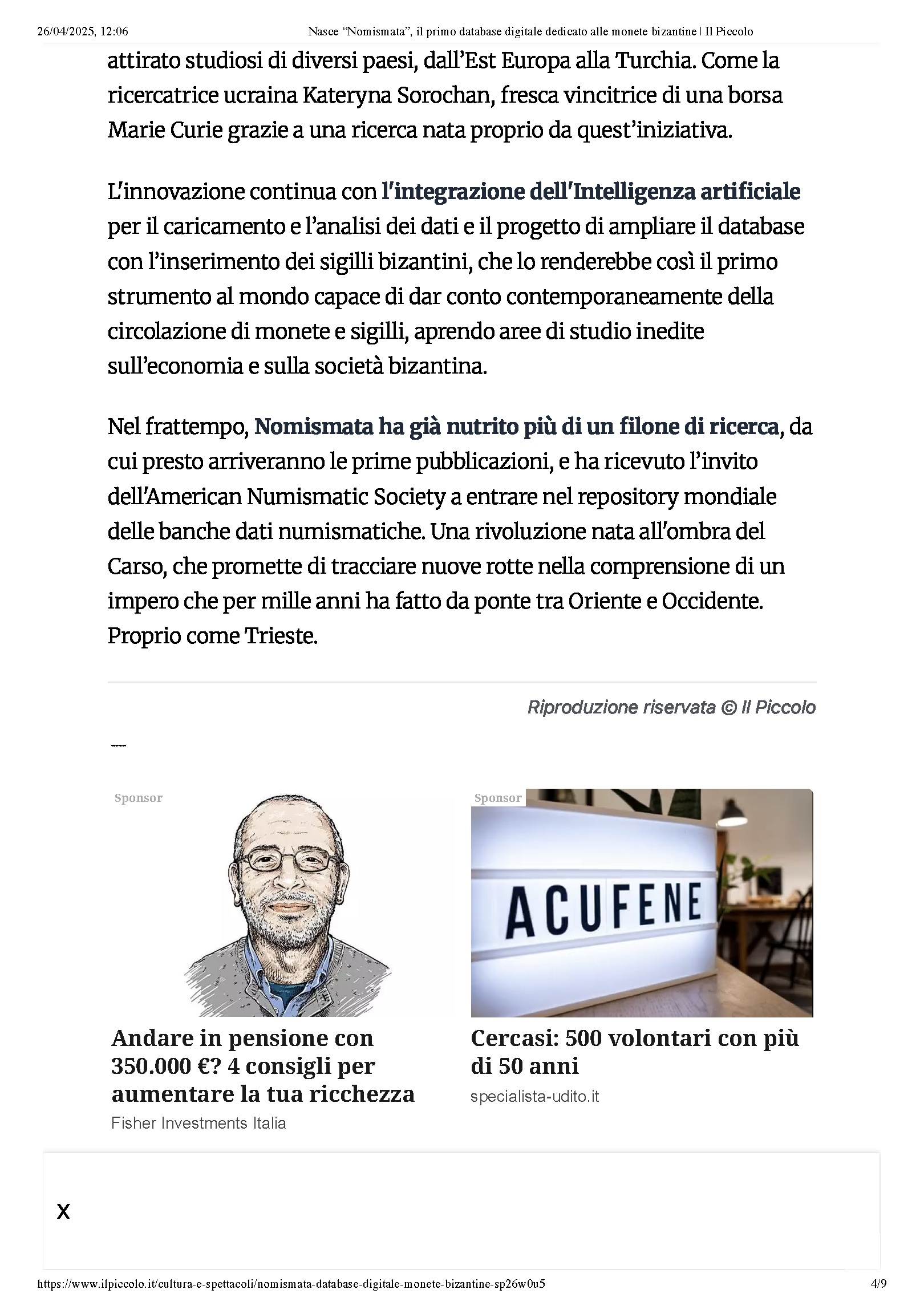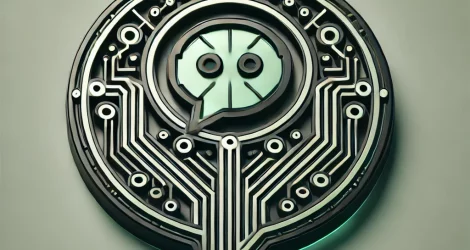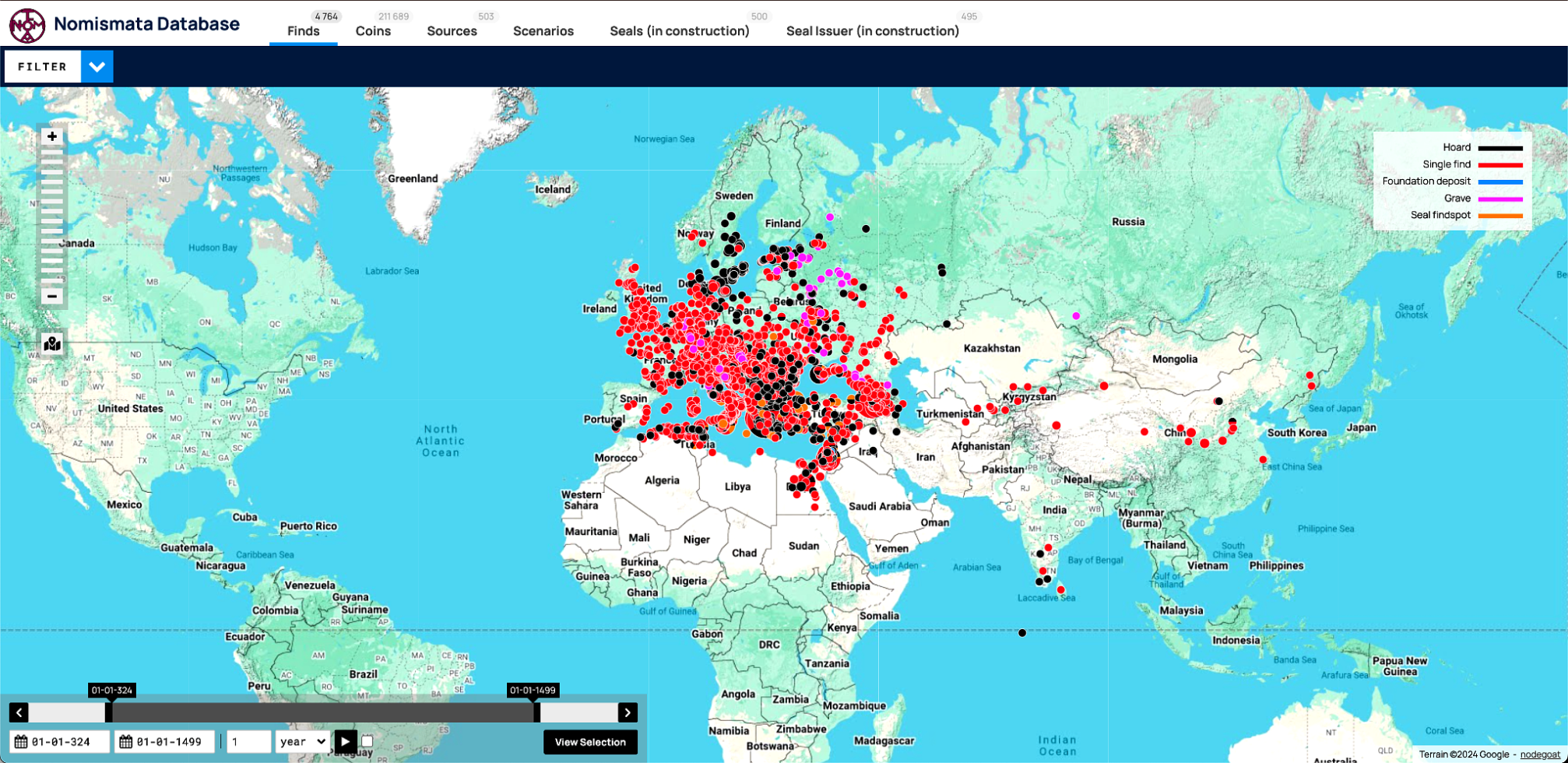
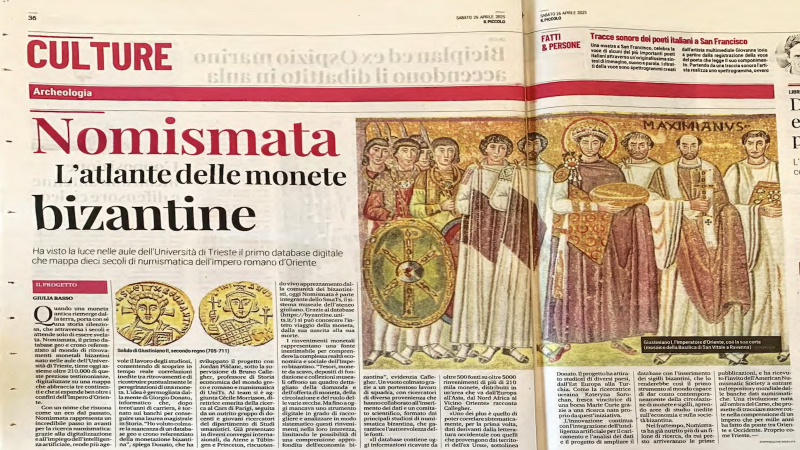
In its cultural section of April 26, 2025, IL PICCOLO of Trieste features an outstanding article on Nomismata, penned by our contributor Giulia Basso.
“Nomismata” Is Born: The First Digital Database Dedicated to Byzantine Coins
Mapping Ten Centuries of Numismatics from the Eastern Roman Empire: A Project by the University of Trieste
Giulia Basso
When an ancient coin resurfaces from the earth, it carries with it a silent story, spanning centuries and waiting to be revealed. Nomismata, the first geo- and chrono-referenced database in the world dedicated to Byzantine coin finds, created at the University of Trieste, today brings together over 210,000 of these precious testimonies, digitized on a map that spans three continents and stretches far beyond the borders of the Eastern Empire.
With a name that echoes from the past, Nomismata represents an incredible step forward for numismatic research: thanks to digitization and the use of artificial intelligence, it makes the work of scholars much easier, allowing them to discover previously unknown correlations between finds in real time and to accurately reconstruct the journeys of coins. The idea was conceived by Giorgio Donato, an IT specialist who, after a thirty-year career, returned to the classroom to earn a master’s degree in History.
“I wanted to fill the gap of a geo- and chrono-referenced database for Byzantine coinage,” explains Donato, who developed the project together with Jordan Piščanc, under the supervision of Bruno Callegher, professor of Economic History of the Greek and Roman World and Numismatics at UniTs. Cécile Morrisson, emeritus research director at CNRS Paris, later joined the team, followed by a large group of professors and young researchers from the Department of Humanities.
Already presented at several international conferences, from Athens to Tübingen and Princeton, receiving enthusiastic feedback from the community of Byzantine scholars, today Nomismata is an integral part of SmaTs, the University of Trieste’s museum system. Thanks to the database, it is now possible to trace the entire journey of a coin, from its minting to its final disappearance.
Coin finds are an invaluable source for understanding the complex economic and social realities of the Byzantine Empire. “Treasures, excavation coins, foundation deposits, and museum collections provide a detailed picture of the supply and demand for currency, its circulation, and the role of various mints. But until now, there was no digital tool capable of systematically collecting and analyzing these finds as a whole, limiting a deeper understanding of the Byzantine economy,” notes Callegher.
This gap has been filled thanks to an extraordinary team effort, with researchers from different backgrounds collaborating on data entry and a scientific committee, made up of leading scholars in Byzantine numismatics, ensuring the reliability of the sources. “The database now contains information drawn from over 500 sources about more than 5,000 finds of over 210,000 coins, spread across an area stretching from Europe to Asia, from North Africa to the Near East,” says Callegher.
“One of the key strengths is the ability, for the first time, to systematically correlate data from Western literature with that from the territories of the former USSR,” highlights Donato. The project has attracted scholars from various countries, from Eastern Europe to Turkey, such as Ukrainian researcher Kateryna Sorochan, who recently won a Marie Curie Fellowship for a project born out of this very initiative.
Innovation continues with the integration of artificial intelligence for data uploading and analysis, and with plans to expand the database by including Byzantine seals. This would make Nomismata the first tool in the world capable of simultaneously tracing the circulation of both coins and seals, opening up entirely new areas of study on Byzantine economy and society.
In the meantime, Nomismata has already sparked several research lines, with the first publications expected soon, and has been invited by the American Numismatic Society to join the global repository of numismatic databases. A revolution born in the shadow of the Karst Plateau, one that promises to chart new paths in the understanding of an empire that, for a thousand years, served as a bridge between East and West—much like Trieste itself.
